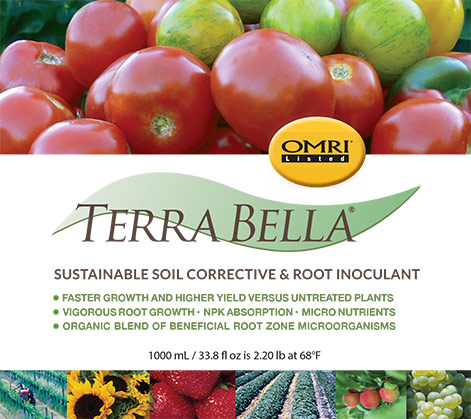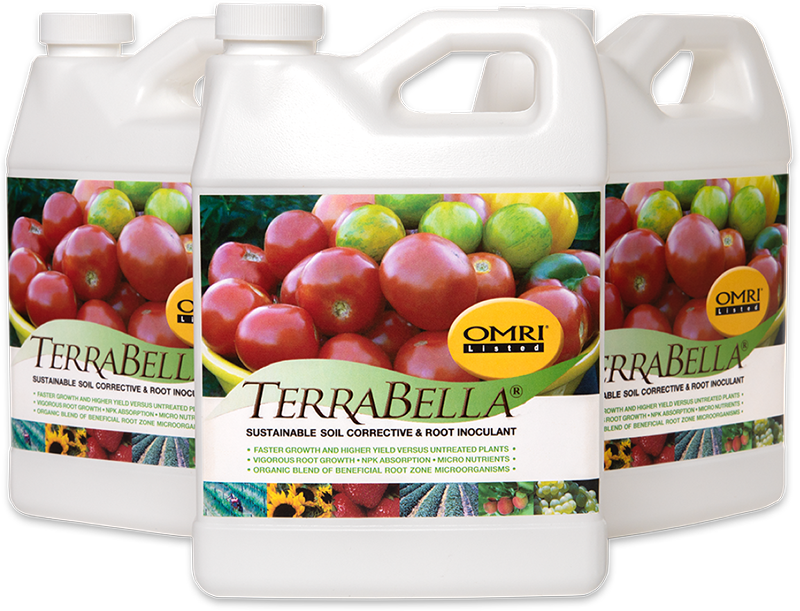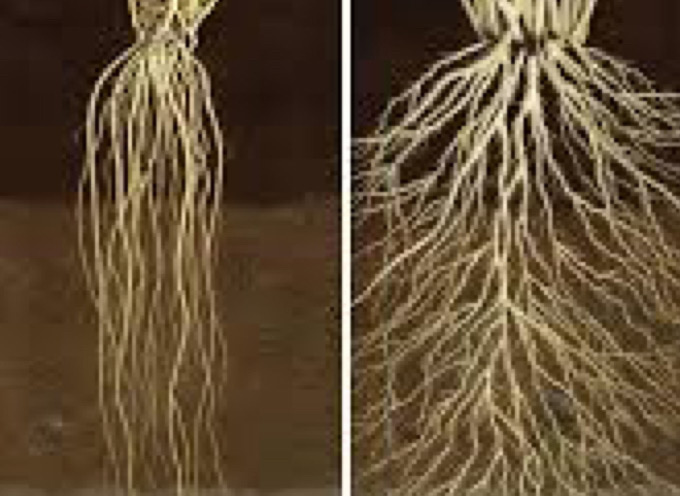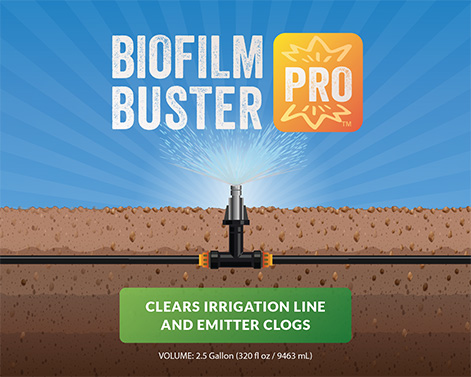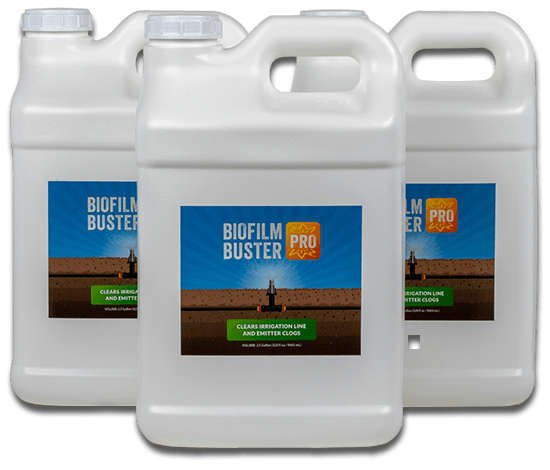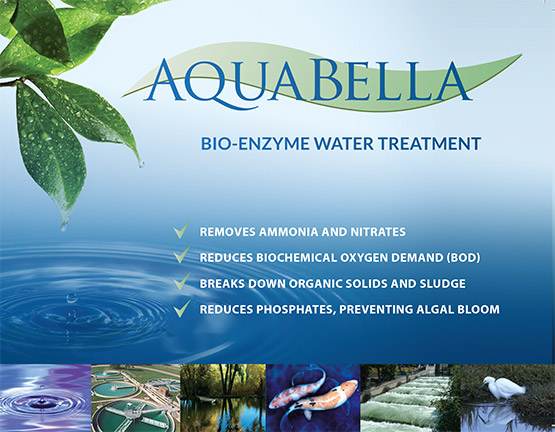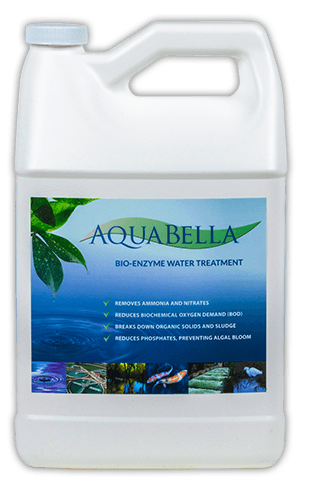The Science Behind Our Microbial Difference
Bacteria are an essential part of the world around us – in the water, in soil, in plants, and animals. In a planet-wide network of processes called “Biogeochemical Cycling” – where nitrogen, carbon, phosphorous, and many other elements are all cycled from one form to another– bacteria play an essential part of every cycle. This gives plants, animals, and humans the nutrients needed for survival, and allows air, soil, and water to support life itself. When human activity – such as industrial or agricultural processes – impacts an environment, this natural microbial balance is lost. This leads to, for example, farmland with decreased soil fertility, or a watershed that no longer has enough oxygen to support fish growth. AquaBella Organic Solutions products can restore the balance necessary for life to flourish in every environment where our products are used.
Biogeochemical cycling gives plants, animals, and humans the nutrients needed for survival, and allows air, soil, and water to support life itself. This cycling process is critical for providing a balance to ensure these native environments are maintained. When human activity – such as industrial or agricultural processes – impacts an environment, this natural microbial balance is lost. This leads to, for example, farmland with decreased soil fertility, or a watershed that no longer has enough oxygen to support fish growth. Restoration of soil fertility and water quality in impacted environments requires bacteria to bring this balance back through biogeochemical cycling processes. It can take years, decades, or even longer to restore these environments without intervention. This is where the products made by AquaBella Organic Solutions can make a significant difference. Our goal is to restore the balance necessary for life to flourish in every environment where our products are used. We do this by replenishing the beneficial microbes present, with a particular focus on soil and water in agricultural environments.
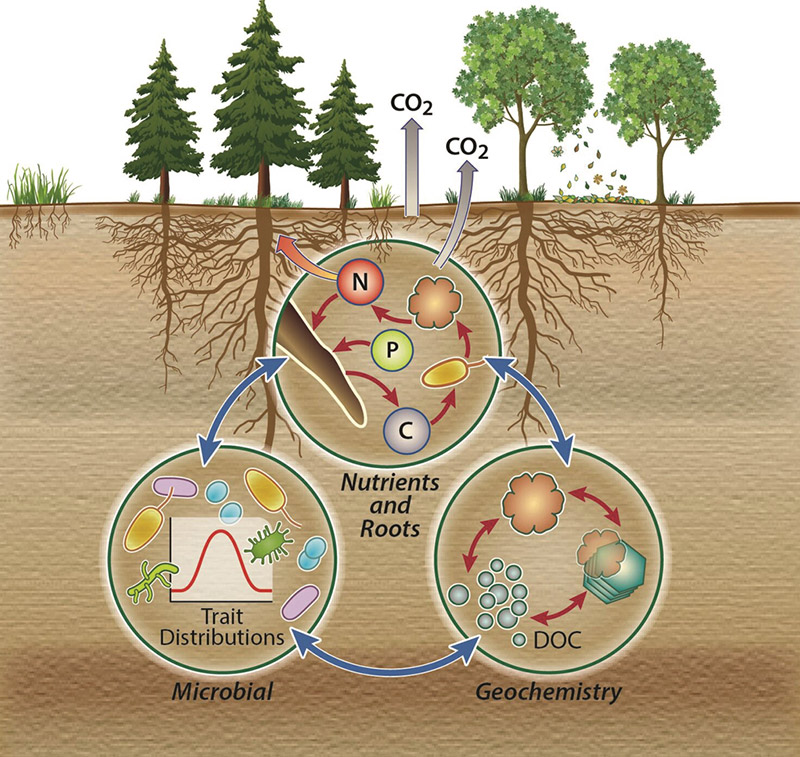
TerraBella - Biostimulant Root Inoculant & Soil Corrective
TerraBella's unique and highly concentrated blend of soil microbes promotes uptake of nitrogen, phosphorous, potassium and other essential elements for plant growth. The combination of aerobic and anaerobic microbes works throughout the root zone to increase crop yield, soil fertility, and resistance to disease and pests.
Rhizosphere microbes consist of a select group of beneficial bacteria called plant growth-promoting rhizobacteria or PGPR which have the unique ability to promote healthy plant growth, to promote high yields, and to restore soil fertility. These PGPR not only aid in nutrient uptake, but also displace harmful soil life that may be present. While common in pristine natural settings, PGPR populations are often very low in agricultural, urban and residential settings. When you till your farm or hoe your garden, turning the soil over and exposing it to air, surface soil microbes that have no role in helping plants will grow rapidly upon this oxygen exposure, at the expense of the mostly microaerophilic (low oxygen) and anaerobic (no oxygen) PGPR. TerraBella brings this vital component of soil biology back to the soil, benefiting your soil, your plants, and ultimately, your harvest.
PGPR play a key role in making nutrients from both fertilizer and soil – including Nitrogen (N), potassium (K), phosphorous (P) and various other nutrients including trace metals and minerals – available to plants by either “digesting” the nutrients from the soil particles or by cycling the nutrients into a form that can move through soil and that the plant can take up.
PGPR not only provide nutrients to plants, but to other soil microbes important to plant health. In particular, plant beneficial fungi called mycorrhizae also require nutrients made available by PGPR in order to colonize the plant rhizosphere. Mycorrhizae can help form a protective barrier around plant roots, protecting them from pathogenic fungi, and can significantly increase nutrient and water uptake by extending the reach of the plant root system in soil.
PGPR can also help protect plants from abiotic stresses such as nutrient or water deficiency, high salinity, and temperature extremes and from biotic stresses such as various plant pathogens and pests. For example, PGPR can help mitigate the negative effect on plant growth brought about by the increase in ethylene levels the plant makes in response to stressors such as high salinity, or drought. ACC is the immediate precursor of ethylene in plants. When ACC is exuded by plant roots, PGPR can degrade this ACC. This will cause the plant to exude more ACC, resulting in decreased levels of ethylene in the plant and allowing root elongation to occur leading to increased growth. PGPR can also produce a variety of phytohormones that increase root growth and surface area, resulting in an increased volume of soil that can be accessed for water and nutrient uptake by a plant. PGPR-made phytohormones include (1) Indole-3-acetic acid (IAA) – an auxin-type phytohormone that controls a wide variety of plant growth processes, including several key roles in plant root development; (2) Cytokinin phytohormones – which stimulate plant cell division, control root meristem differentiation, and promote root hair development; and (3) Gibberellin phytohormones – which enhance the development of plant tissues and promote root elongation and lateral root extension. PGPR are also capable of stimulating gibberellin release by the plant into the rhizosphere, further increasing the effect.
Taken together, healthy rhizosphere PGPR provide growers with several benefits, such as (1) Increased crop yields due to increased nutrient availability; (2) Increased stress resistance resulting in healthier plants; and (3) Increased efficiency of fertilizer use, which allows growers to reduce the amount of fertilizer applied, resulting in reduced costs and reduced nutrient runoff that can negatively impact local watersheds.
Science behind BioFilm Buster Pro
BioFilm Buster Pro is specifically formulated to rapidly break down the organic solid materials that comprise most irrigation line clogs – including biofilm-based clogs – and restore them to 100% functionality.
The idea for BioFilm Buster Pro initially came from an observation made several years ago by a grower who noticed when applying TerraBella through a drip system that in addition to TerraBella increasing his crop yield, it also helped clear some of his drip irrigation line clogs. Based on this observation, we set out to develop a product with a greatly enhanced ability to clear irrigation line clogs without TerraBella’s plant beneficial activities. Because BioFilm Buster Pro is an offshoot of TerraBella – a plant-beneficial product – it has the additional advantage over chemical irrigation line treatments in that it can safely be used during the growing season.
How does BioFilm Buster Pro – a microbe-based product – clear irrigation line clogs? To understand this, we first have to know what causes irrigation clogs. When water mixed with fertilizer and other additives runs through an irrigation line, this mixture carries small nutrient particles and microbes that settle when the system is turned off. The microbes then begin to attach to the irrigation line with the fertilizer nutrients acting as food to these microbes so they will begin to grow. Every time the irrigation line is used, this process repeats itself, until eventually the microbes form a biofilm clog large enough to block the line or emitters. Biofilm clogs are partly comprised of slimy, sticky extracellular polymeric substances (EPS) made by the biofilm bacteria. All of the compounds present in EPS – polysaccharides (carbohydrates), proteins, and DNA/RNA (nucleic acids)– are made up of macromolecules. Macromolecules are very large organic molecules that are created by the polymerization of smaller subunits. This means that these compounds consist of long chains of small similar units – for example a polysaccharide consists of a long chain of monosaccharides (simple sugars), a protein consists of a long chain of amino acids, and nucleic acids (DNA/RNA) consist of a chain of nucleotides. “Organic” means the backbone of these macromolecules consists of a carbon-based chain, with hydrogen and oxygen also present (other elements can also be present, but C, H, and O must be present).
In order to break down the EPS and clear irrigation line clogs, the treatment must have the ability to rapidly break down these macromolecules.
To understand how BioFilm Buster is able to clear irrigation lines when the basis of our other products is to restore healthy microbial communities in the environment, one needs to think about how beneficial plant bacteria cycle nutrients from the soil to the plant roots. Most healthy farm topsoil has a high organic (carbon-containing) content, as the organic component in soil is also rich in nutrients that plants need such as nitrogen, phosphorous, sulfur, and many others. In order to free up the nutrients present in soil, beneficial rhizosphere bacteria such as those found in TerraBella first need to release nutrients from this organic soil matter. This “digestion” process is similar to what would be required to break down the EPS component of biofilm clogs. The formula and manufacturing process for BioFilm Buster is optimized for this soil digestion activity such that BioFilm Buster has the ability to rapidly remove irrigation line clogs, restoring irrigation systems to 100% capacity. BioFilm Buster will not only rapidly break down biofilm clogs as well as mineral and other organic compound clogs, it won’t damage soil or plants when flushed out of the irrigation system, and it won’t damage any part of the irrigation system even with extended exposure.
AquaBella Bioenzyme – our microbe-based water treatment solution
AquaBella Bioenzyme helps restore the natural balance to water bodies impacted by the influx of residual fertilizer compounds and animal/plant waste products.
For water bodies impacted by agricultural fertilizer runoff such as the Sacramento-San Joaquin River Delta and for water bodies comprised of agricultural waste such as manure lagoons or vineyard waste ponds, multiple water quality issues are seen. These include high Biochemical Oxygen Demand (BOD) / low Dissolved Oxygen (DO), uncontrolled algae growth, organic solids and sludge accumulation, and high concentrations of contaminants such as nitrate and phosphate that can cause water eutrophication. Eutrophication is the process where an oversupply of nutrients in water leads to an overgrowth of algae and plants, often resulting in oxygen depletion and an inability to support fish, plants or other life.
Many agricultural operations use one or more open-air pits dug into the ground called lagoons to treat agricultural waste, with nothing except water added. Although lagoons are open to the air, only the top few inches of the lagoons are aerobic. In order to make this type of system aerobic, air would have to be pumped into the lagoons and actively circulated throughout the waste, which is not cost-effective. As a result, much of the wastewater is anaerobic (without oxygen). The waste is pumped from one lagoon to the next as the larger solids either settle out, or are digested by the microorganisms already present in the waste. Unfortunately, these microbes are not able to fully remove contaminants such as nitrates and phosphates present, or fully break down the organic solids (sludge), leading to an accumulation of waste products that are expensive to treat.
AquaBella microbes are well-suited for these conditions as they are metabolically active under both aerobic and anaerobic conditions, and can break down accumulated sludge and contaminants, restoring the balance necessary for a healthy water ecosystem.
AquaBella microbes can remove nitrogen-containing contaminants from the water by chemically converting ammonia/ammonia-based organic compounds to nitrite (NO2) and nitrate (NO3—) in a process called nitrification, then completely removing nitrogen from water by converting nitrate to dinitrogen gas using a process called denitrification. This denitrification capability provided by AquaBella is unique compared to other products on the market. AquaBella microbes can also reduce phosphate levels in water by metabolizing the phosphates and any organic solids associated with phosphates. Note that high nitrate and phosphate concentrations are a requirement for algae growth, so by limiting these compounds, AquaBella also helps to prevent any new algae growth. AquaBella microbes can lower BOD levels by breaking down and removing biodegradable organic solids. Taken together, these processes promoted by AquaBella Bioenzyme rapidly restore a healthy balance to water by preventing water eutrophication and increasing water dissolved oxygen levels such that a variety of aquatic life can be maintained.

